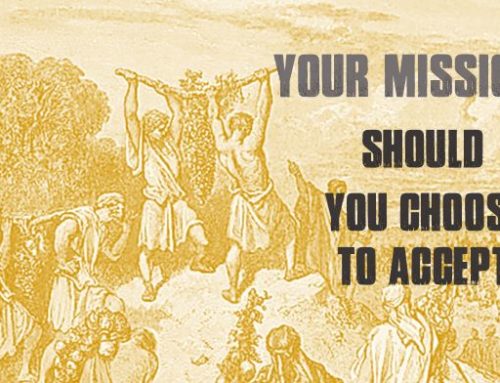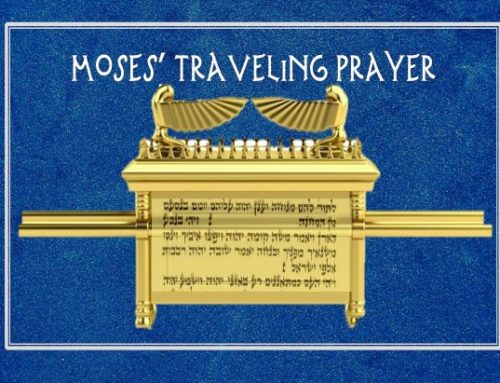Parashat Berasheet, (Genesis 1.1-6.8, Isaiah 42.5-43.10)
I made my way through the dusty, 1930s era museum and peered into antique display case to see ancient eye sockets staring back through time. The skull, a golden hue, and a femur were all that was left of the one archaeologist call “the Galilee Man”. I said to my wife, “look at the brow on this guy”, and joked, “Maybe this was Adam”. He was no doubt he was one of the first. Genesis calls us to our origins, a time known only to the Creator. It paints a scene of darkness, formless void, and intensive swells of water with no shore. Upon deep chaos descended the fluttering Spirit of God, reminiscent of Noah’s dove searching for an earth she once knew. God speaks light and calls for dry land. From the red earth which appeared, adamah in Hebrew, God formed Adam. The question of origins however creates a great dilemma, not only for Adam, but us his children. Who are we? Adam looked for something like himself among the animals but could not find a suitable helpmate. As some note, only when woman is taken from side, and he identified her as eishah (woman), could he then define himself as eish (man). But even that moment is not sufficient to understand who man is. We must look to our Creator’s image and likeness.
“Let Us make man in Our image, according to Our likeness; let them have dominion over the fish of the sea, over the birds of the air, and over the cattle, over all the earth and over every creeping thing that creeps on the earth.” Gen. 1.26 NKJV
The danger of a conclusion without knowledge
Fashioned according to His image, yet formed from the dust, where can man look for answers of origin? The anthropologist digs into the soil to find himself; the writer of Genesis looked to a heavenly voice. To understand the danger of coming to conclusions without knowledge, we must enter the Garden where the first couple were placed. In the midst is the tree of Life and a Tree of the knowledge of good and evil. In the cool of the day we hear the man and wife running over soil. Cracking branches and brushed leaves fill the silence. Soon another sound is heard, a voice walking, though the emphasis in Hebrew is stronger. Some translations render it, “walking up and down” (YLT) or “going to and fro” TLV. There is also an urgency in the Voice, “Where are you?” (אַיֶּֽכָּה). Those same Hebrew letters, without pointing, can also mean, “How?” (אֵיכָ֣ה). How did you come to this place? How have you been changed by sin? How do we remedy this? All these fill our minds in the garden. Did the Creator not know what happened? Did He not know where they were hiding? Of course, He did. Those questions were for our benefit.
Adam conclusions and solutions were insufficient. They fashioned fig leaves to cover nakedness, but what about their sin? God sought them with questions. “Who told you that you were naked?” Were they not naked? Were their eyes not opened by the tree of the knowledge of good and evil? They were truly naked, but that was not the whole truth. They gained knowledge insufficient to remedy the situation. Science is put forward daily in the media as though it is a source of knowledge in itself. Are we fooling ourselves with fig leaves?
Who told you learned scientist that creation is incongruent with scripture? Who told you physicist, creation is random? Somewhere a pastor leans on his pulpit to announces, “the Creation story is a Near Eastern myth”. Who told you this pastor? And somewhere a part time lawyer, part time alcoholic nurses a drink and imagines biological life extricating itself from the mud. And so, God’s question to Adam is our question.
“Who told you that you were naked? Have you eaten from the tree of which I commanded you that you should not eat?” Gen. 3.11 NKJV
That tree is a poor substitute for God’s word. So, what does the Bible tell us about our origins? The question of “who told you?” is one which we should all contemplate.
I. Who Told you that you were naked?
In what sense were they naked? Before, they were naked and knew no shame. Adam and Eve acted on a conclusion leading them further from truth. Their guilt exposed, they accepted the serpent’s suggestion that their eyes were now opened, but sin deceives. Their eyes were unable to discern their spiritual exposure. And so, they ran to a tree for covering. Almost everyone has experienced the dreaded hospital gown, often made of paper, exposed in the back. That is a metaphor for human wisdom covering a spiritual problem. Like the psychologist who offers years of treatment, but never suggesting God’s answer to shame. Adam and Eve concluded their condition needed the pierced and sewed leaves of a fig tree. Later, Cain continued to offer plants instead of a perfect sacrifice.
II. Who Told You a Tree Could Cover Sin?
Throughout the generations we have speculated what was the tree of knowledge of good and evil. Some believe it was that same and closest tree from which they grabbed leaves – a fig tree. It is interesting that the fig is the first tree mentioned by name in the Bible. Why? Because man thought he could cover himself with its leaves.
“Also for Adam and his wife the Lord God made tunics of skin, and clothed them.” Gen. 3. 21 NKJV
In this Genesis moment, Adam learned the only covering for sin is as sacrifice. Any covering short of death is insufficient. The writer of Hebrews explained.
“And according to the law almost all things are purified with blood, and without shedding of blood there is no remission.” Hebrews 9. 22 NKJV
Who taught Abel to place the best of his flocks on an altar? Adam! It seems fitting that since man sinned through a tree, redemption should come through a tree. Yeshua’s blood, the death of the second Adam on a tree redeems all who call on His name.
III. Who Told You to Find Your Own Way
Hand in Hand they raced through the Garden to find their own solutions, hiding from the only One who could bring them back into fellowship with God. Adam made a conclusion rooted in fear causing him to hide. Thankfully, this is not how man’s story ends, nor how our story should end. Is there an answer to our condition? Yes, it is found in responding to the “Voice of the Lord”. As fast as we are running, he is moving to our rescue. I find hope in Adam and Eve’s grandson Enosh. His name speaks of the frailty of man.
“And as for Seth, to him also a son was born; and he named him Enosh. Then men began to call on the name of the Lord.” Gen. 4. 25 NKJV
We were never meant to find our own way or our own solutions. In Enosh’s day anashim, (men) began to call on the name of the Lord.
Conclusion
Genesis calls the anthropologist to lay down his trowel and brush away the dirt to look up. We are not random processes. While plants and animals are accorded to their kind, man’s kind is revealed from a place rooted in the image of God, in His likeness. (Gen 1.26) The story of Genesis is the story of our journey home. I hope every person reading these words will see how special you are to God. Adam and Eve example teach us to confess sin rather than coming to human conclusions and solutions. Confessing and turning from sin opens the door for a true covering for nakedness. Knowledge may mask a moment, salve a wound, or dulling the senses, but it cannot cover sin. May we find the courage to do what Adam’s grandson Enosh did – call on the Name of Adonai.
Shavua Tov from Zion






Wow! I really enjoyed this thought provoking message. By asking questions we find and understand the answers for ourselves. When given answers, it leaves us with more questions. I appreciate your stimulating perspective.